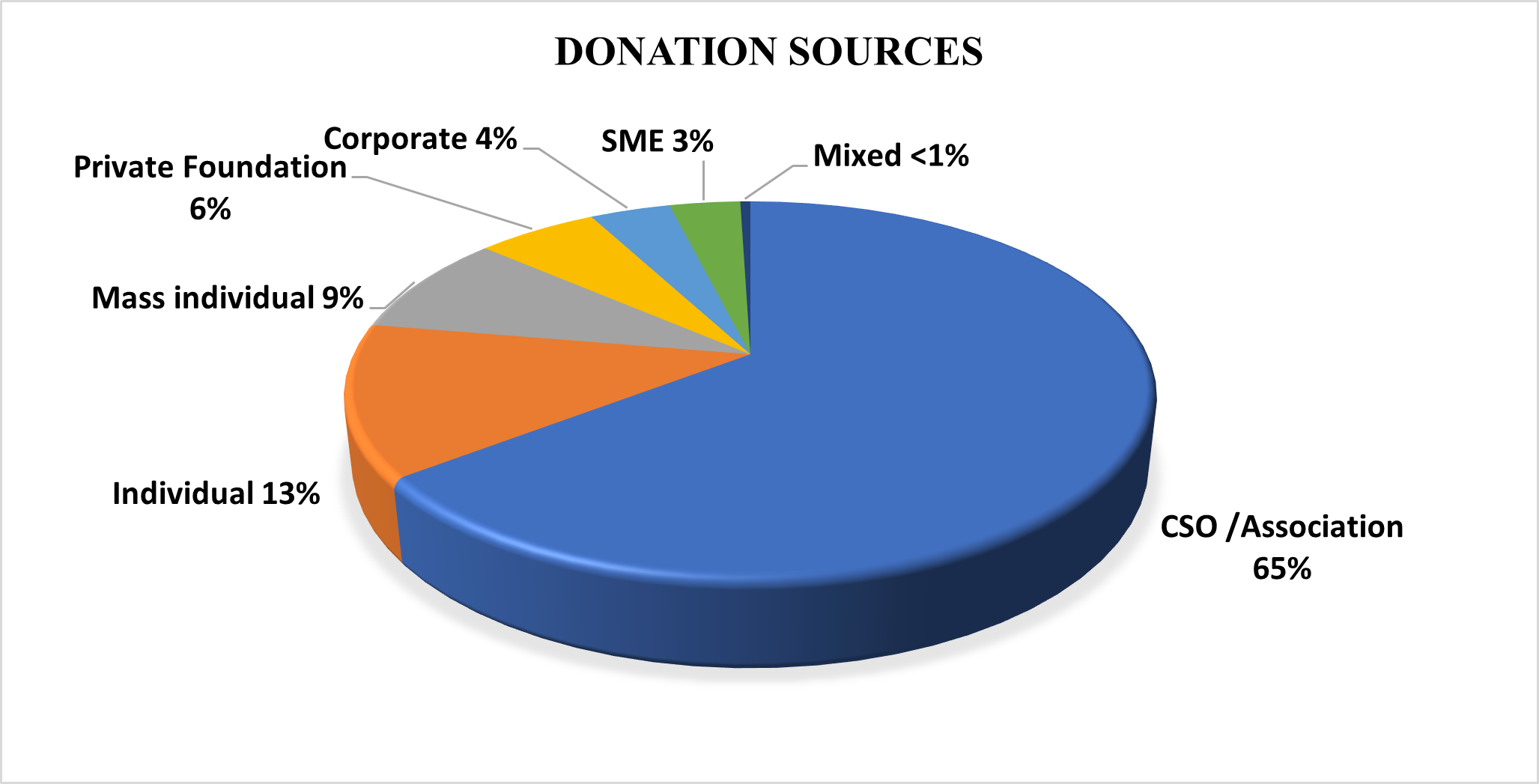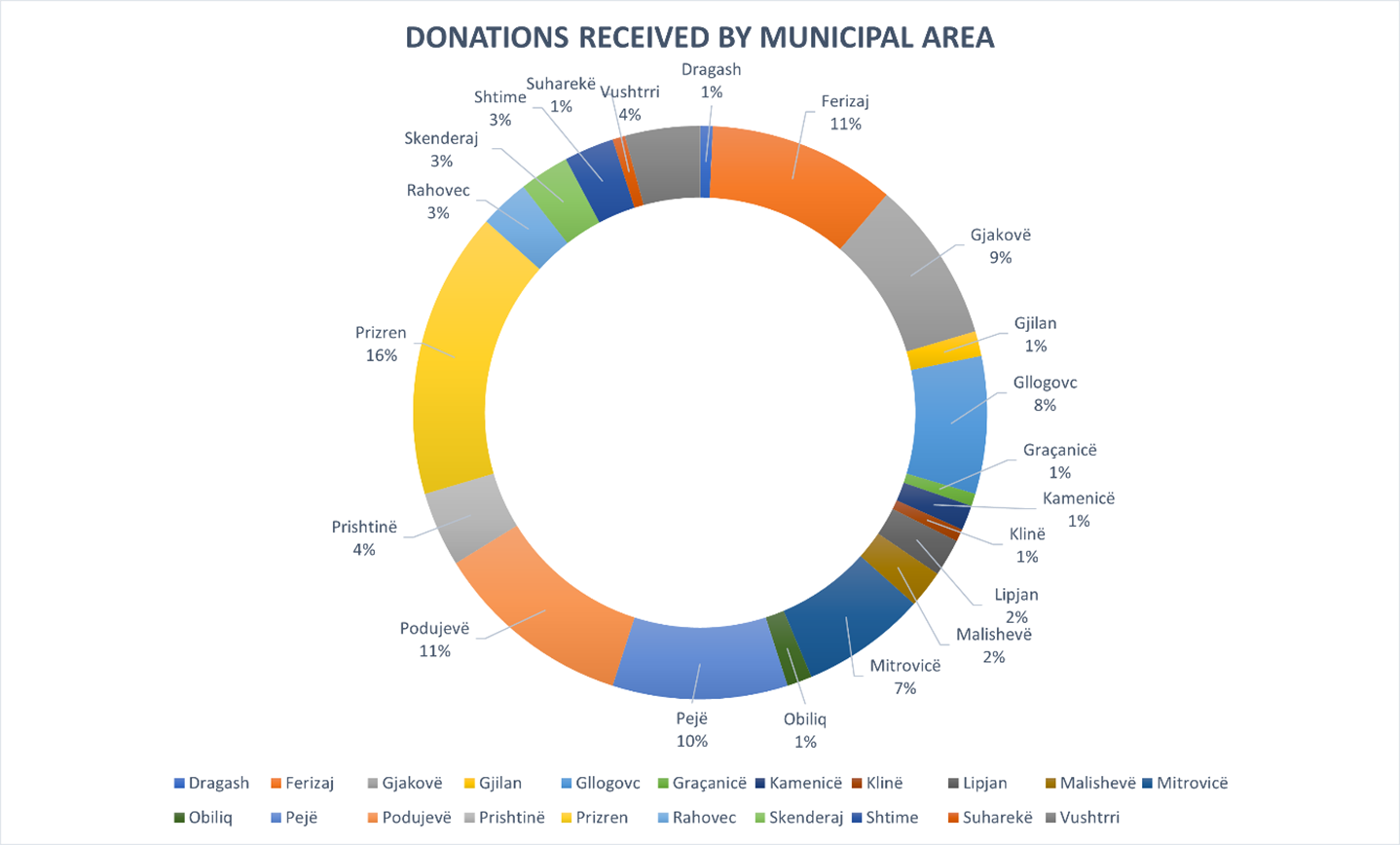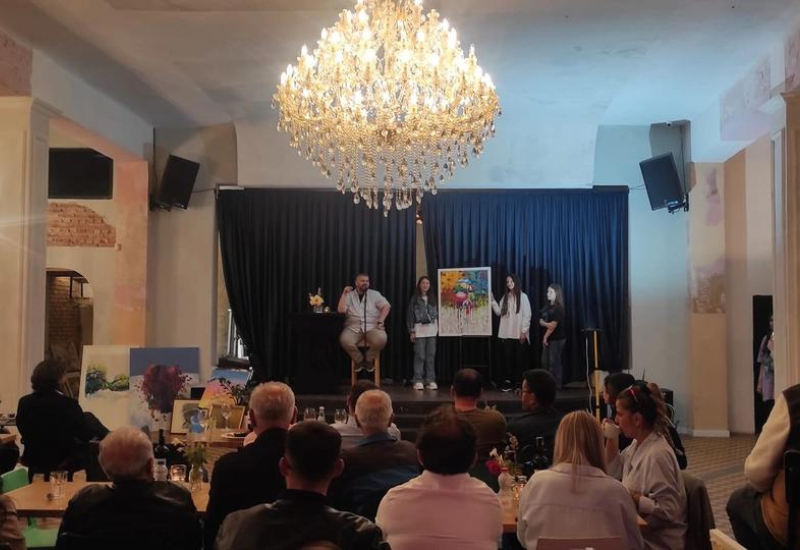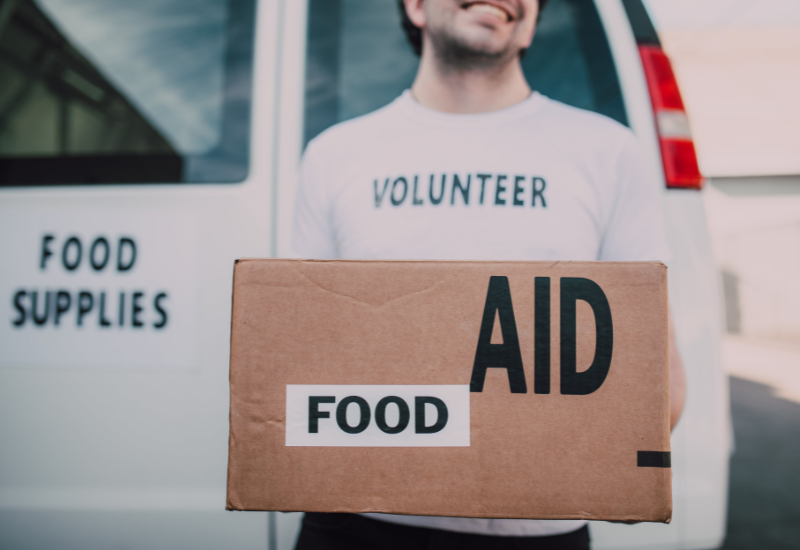Understanding philanthropy in Kosovo: A deep dive into donations to support individuals and families
In the first eight months of 2023, “Giving Kosovo” recorded 430 instances of donations for philanthropic purposes.
Among these, data on exact donation sums was available for 163 instances, representing 38% of all donations. These 163 instances collectively contributed an impressive $8.1 million to philanthropic causes in Kosovo. However, for the remaining 263 instances, data on donation sums was unavailable, highlighting the need for further transparency in philanthropic reporting.
During the same period, a total of 206 instances of donations were directed towards individuals and families in Kosovo. Among these, precise donation sums were accessible for 32 instances, amounting to approximately $1.3 million, but for the remaining 174 instances, information regarding the exact donation amounts remained undisclosed.
-
Donor demographics: Where does support come from?
Approximately 83% of the total donations stemmed from within Kosovo, underscoring the robust local support for individuals and families. Switzerland accounted for a notable 17% of the donations, signifying significant international contributions. In contrast, Germany and Belgium each made up less than 1% of the total contributions, demonstrating comparatively minor involvement from these two nations in supporting philanthropic endeavors in Kosovo.
Around 50 distinct contributors aided these categories, with a significant portion of these contributions directed through the “Balkan Orphans” Association, which notably facilitated half of the donations. In the chart below, you can explore a detailed breakdown of the various donors and their respective contribution percentages.

-
Sources of donations: A mix of contributors
The donations came from various sources, including CSOs and associations, individuals and groups, private foundations, corporations, and SMEs. More than 50% of donations were facilitated through CSOs and associations. The chart below provides a comprehensive breakdown of the sources of donations.

Of all the donations collected, 81% were the result of calls for donations and fundraising events, highlighting the effectiveness of these methods in generating contributions. Direct donations constituted 17% of the total, while events like dinners, lunches, sports activities, and others collectively comprised 2%. In contrast, grants or calls for applications constituted a modest less than 1% of the overall contributions.
-
Beneficiaries: Who does receive the support?
The primary beneficiaries of these donations were individuals and families facing economic difficulties, constituting the majority at 72%. An additional 6% of the donations were directed to specific municipalities, including Mitrovica, Drenas, Skenderaj, Klina, and Istog, to aid in their recovery from flooding. A smaller segment of donations, accounting for 7%, was allocated to support adults and children with special intellectual, physical, and health needs.
Furthermore, 10% of the donations were designated for individuals from specific regions, while 4% extended support to individuals outside of Kosovo, primarily in Albania and North Macedonia. Specifically, approximately 3% of the instances reached recipients in Gostivar, Tetova, Kukës, Lezha, and Shkodër, underscoring the broad geographic impact of these contributions. The chart below provides a comprehensive breakdown of the donations received by municipal area, offering a visual representation of the geographic distribution of philanthropic contributions.

-
Building homes for those in need: A prominent cause
Noteworthy is the fact that nearly half of the donations were dedicated to building new homes for those in need and those whose houses were destroyed by the floods (almost half of the donation instances – 42% were directed for this cause, according to Kosova Dhuron data). The list of municipalities that have benefited include Dragash, Ferizaj, Gjakova, Gjilan, Gllogovc, Graçanica, Kamenica, Klina, Lipjan, Malisheva, Mitrovica, Obiliq, Peja, Podujevë, Prishtina, Prizren, Rahovec, Skenderaj, Shtime, Suhareka, Vushtrri. More than 80 house donations have been directed to families in need and helped them in overcoming such a foundational issue by securing them a long-lasting, safe, and warm place to live.
Inspirational stories of supporting individuals and families in Kosovo
Besides the data, we picked some inspirational stories about giving to support individuals and families in Kosovo. Take a look below.
-
Providing food and healthcare services
Many donations have included food packages, medications, and other vital supplies. The Humanitarian Association "Bereqeti" has facilitated these donations to more than fifty families in need.
Some businesses have offered free healthcare services for those in need. The “Italian Eye Hospital” offered free eye checks and interventions for one family. On Eid day, the “Shell” company in Kosovo donated more than 300 food packages to those facing economic challenges. An individual, N.K., donated more than 1,000 kg of flour to families in Skenderaj that needed it the most, while the owner of the “Aral Petrol” company donated more than 1,000 kg of flour to families in Shtime struggling financially.
-
Donations for medical treatment
Many donations were gathered to aid individuals grappling with severe and rare illnesses, necessitating costly international medical treatment or care, whether it be in Kosovo or elsewhere. More than 20,000 EUR have been raised for the medical treatment of F.M. to support her in getting a liver transplant. More than 35,000 EUR were raised through a campaign to support Sh.L. leukemia treatment in Turkey. More than 18,000 EUR were fundraised for the treatment of A.K., who has been diagnosed with a rare disease that needed treatment outside of Kosovo.

The auction held at the "Menza Ramiz Sadiku" in Pristina by artists from Kosovo and North Macedonia
Photo source: koha.net
The donations were collected through diverse campaigns. One of them included an art fundraiser, where artists from Kosovo and North Macedonia came together to help V.D., in need for cancer treatment internationally, by selling their artwork in an auction held in Prishtina. They managed to collect 18,000 EUR.
CONCLUSION
In analyzing the data on philanthropy in Kosovo, it's evident that a diverse group of donors, including individuals, businesses, and organizations, is actively contributing to the well-being of individuals and families in various ways. The support extends beyond borders and primarily benefits those facing economic challenges. The substantial funds raised underline the significant role philanthropy plays in Kosovo, and it leaves us with important questions about the future of giving and its impact on the region's communities.
These stories we shared are just a few of many inspiring stories of how individuals and families are being supported in Kosovo. If you want to know more about these donations, you can access the database and analyze the data for yourself.
Want to know more about philanthropy and donations in Kosovo? Check out our report on the state of philanthropy - Giving Kosovo 2022.
This article is made possible by the generous support of the American people through the United States Agency for International Development (USAID). The contents are the responsibility of Catalyst Balkans and do not necessarily reflect the views of USAID or the United States Government.
The Citizen Engagement Activity in Kosovo is a five-year initiative implemented by Kosovar Civil Society Foundation (KCSF) in partnership with the United States Agency for International Development (USAID).
